Snakes are animals that are often overlooked. They aren’t always the easiest to spot with their natural camouflage. The locals in Georgia know it’s smarter than not to stay away from snakes and keep their eye out. However, that doesn’t mean everyone knows when snakes come out of hibernation.
You see, like all other reptiles, snakes are coldblooded. This means that wherever they are sets the temperature for their blood. They are known to regulate their body temperature by finding patches of light to sun in and warm themselves up or shade to cool themselves down.
Do Snakes Hibernate?
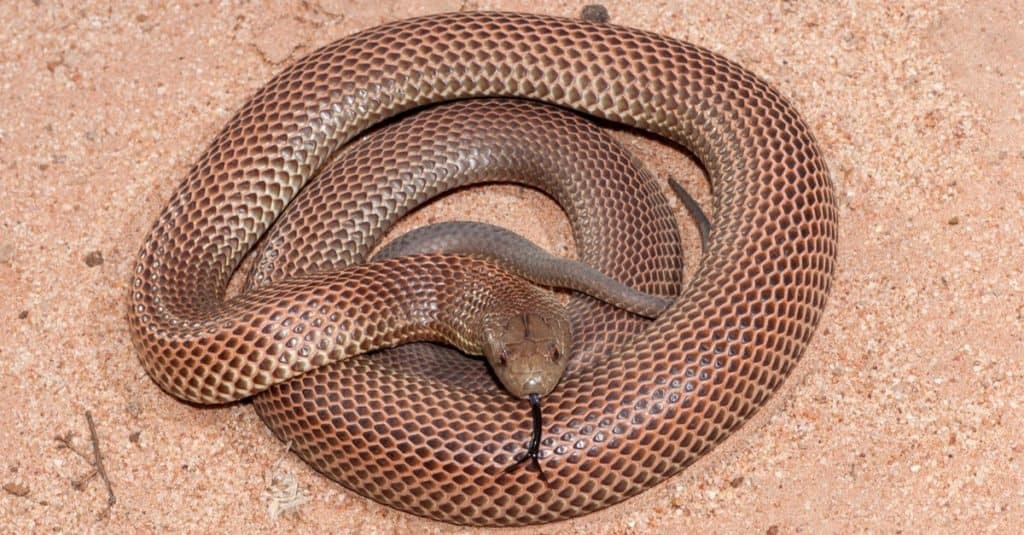
Snakes hibernate in the winter.
©Ken Griffiths/Shutterstock.com
When the leaves start to fall off of trees and your car windows frost up, snakes tend to start disappearing. This is because, in the winter, snakes burrow deep underground and hibernate. Well, it’s not quite hibernation, but instead, a state called brumation.
Brumation is what snakes do to conserve their energy. Their blood is cooled down to outside temperatures, making moving difficult, so they enter a sleep state. The biggest difference between hibernation and brumation is that most mammals who hibernate through the winter will sleep through the winter months. Alternatively, snakes that enter brumation will build up a supply of sugar that will keep their muscles in good condition. During brumation, reptiles will be more sluggish but won’t sleep the entire time.
They may even emerge from brumation during sunny days during the winter! Once the temperature rises during spring, snakes will emerge from brumation and once again become more active.
When Do Snakes Come Out in Georgia?
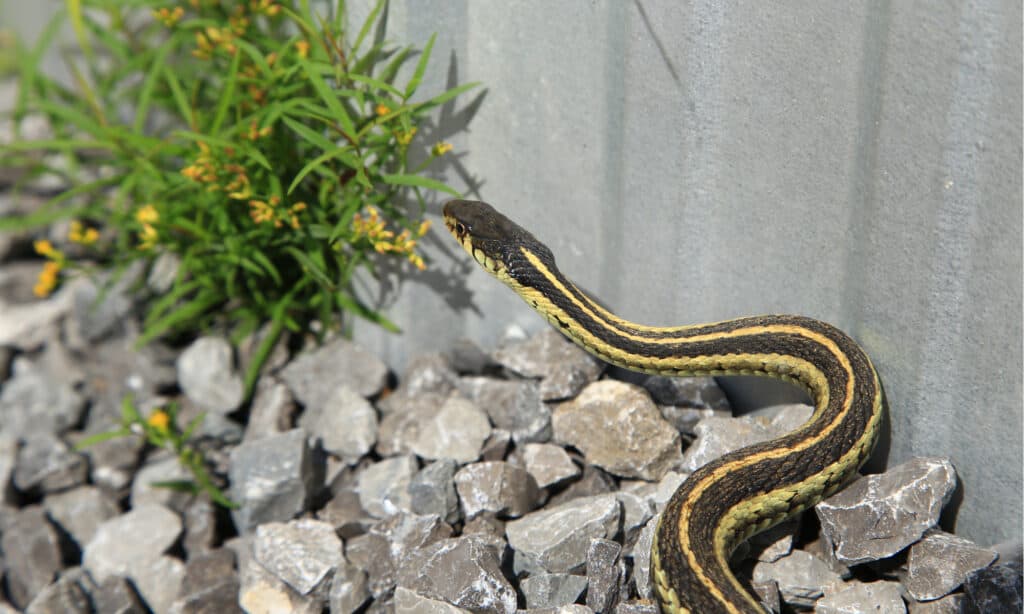
Snakes begin to come out of hiding in Georgia around March and April.
©Alexander Gold/Shutterstock.com
Snake season generally begins in late March or early April in Georgia. Remember that temperature triggers when snakes leave hibernation, so different parts of the state will have varying periods when snakes are most active.
The snow will melt off the ground and drain away, and the air will warm back up. As the sun beats down on the ground, the earth will warm as well. That will trigger the snake’s body to warm up, which in turn helps their heart rate and breathing rate go up.
Once that occurs, the snake will begin to stir and feel hunger in its belly. The snake will slither its way back to the surface, searching for warmth and food.
This is also the time of year gardeners start to come out in droves, planting and pruning their plants to bloom in the more temperate air. If that refers to you, keep an eye out for snakes hunting for food.
Here are the monthly average high temperatures for varying cities in Georgia across March and April.
| City | March Average High (Fahrenheit) | April Average High (Fahrenheit) |
|---|---|---|
| Savannah | 71 | 78 |
| Augusta | 69 | 77 |
| Atlanta | 66 | 73 |
| Dalton | 63 | 72 |
As you can see, March highs range from 71 degrees for Savannah on the coast to 63 degrees for Dalton in the north of the state. Snakes typically brumate at temperatures less than 60 degrees when they become sluggish, and optimally function between about 65 and 85 degrees. Their activity is most elevated in the upper 70s. As you can see, when it’s either too cold or too hot snake activity is dramatically reduced, which is why they’re most active in spring and summer.
So, as you can see, it might be more late April before snake activity reaches high levels in Dalton while Savannah may see peak activity closer to late March and early April.
What Time of Day Are Snakes Active?
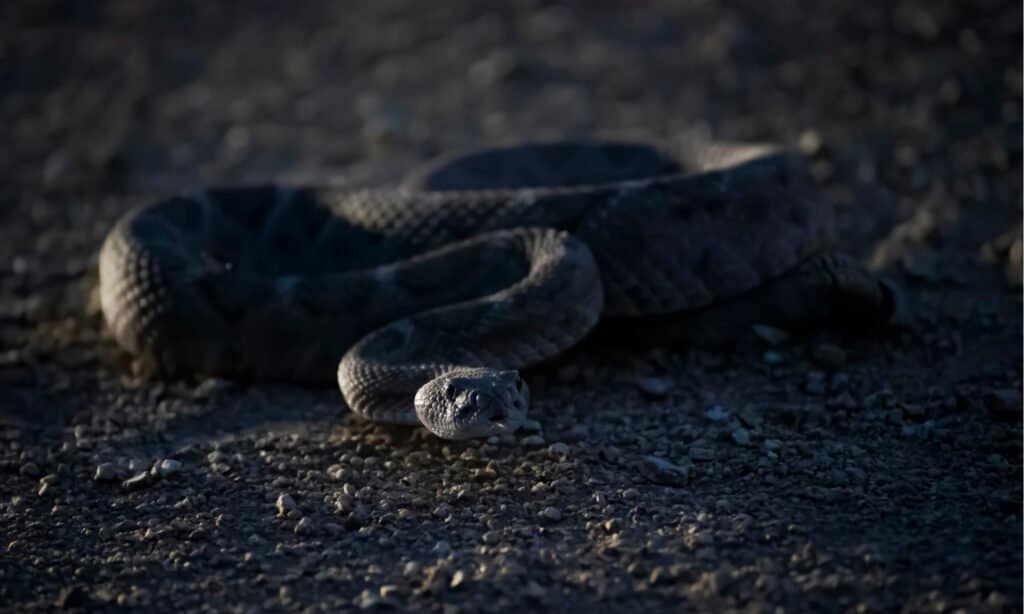
Snakes are most active in the early morning and early evening.
©Erin Donalson/Shutterstock.com
The snake is usually more active in the cooler parts of the day, such as dusk or dawn. This gives them the opportunity to warm up but not overheat.
Believe it or not, snakes are not fans of the super hot summers Georgia can have. Because their body doesn’t automatically register temperature, due to their cold-blooded status, they need to move from sun to shade constantly. Both warming up and cooling down are something they have to waste energy doing.
You may come across a snake during your early morning jog or evening walk with your dog. Snakes enjoy sunbathing on rocks or other ground that is warmed by the sun.
Where Can You Find Snakes?
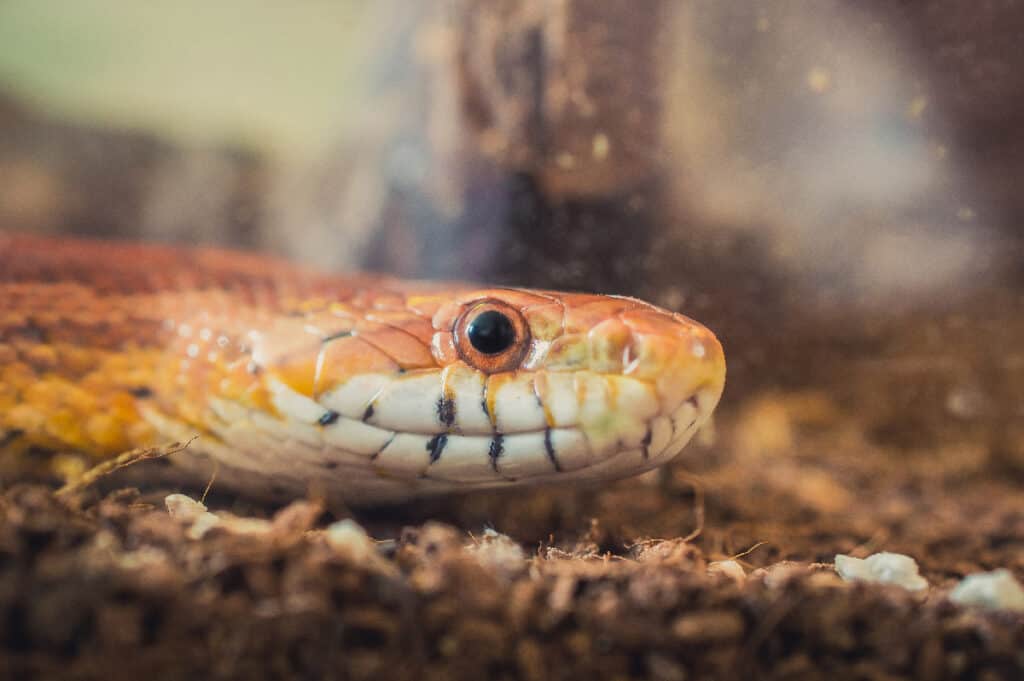
Snakes hide in tall grass, underground, and inside of logs.
©iStock.com/Tamascsere
Snakes are not native to every country in the world, so feel free to move to Ireland if snakes terrify you that much. That’s a better option than the North Pole, at least. In Georgia, snakes are very common to come across as there are forty-six species local to the state.
If you live in Georgia, you probably have a yard lush with vegetation or many local woods to explore. Remember that you can find snakes hiding within the tall unmown grasses or lurking among your well-kept plants.
Snakes are long and thin, so they can wiggle just about anywhere. They need to hide from predators like birds, who could scoop them up if spotted from above.
When a snake eats a rodent, it may have stumbled onto its den or burrow. The snake will hole up there to digest its meal. When hunting, the snake may hide within the knots of trees or their wiry roots.
Old rotten logs, bushes, that garden bed over there; snakes can be found where you’d least expect them. You wouldn’t see them until it’s too late, and they’re popping out and lunging at you.
Snakes are easier to spot when their sunning. They may be found on a patch of dirt or rock or on a higher-up place lying on glass. Anything likely to absorb the heat of the sun is a potential place for a snake to sunbathe.
What Are the Most Common Venomous Snakes in Georgia?

The most common venomous snakes in Georgia are the copperhead and cottonmouth snakes.
©Creeping Things/Shutterstock.com
Since Georgia has so many snakes along its borders, you may wonder what some of the venomous snakes to be found in Georgia are. They include:
- Copperhead
- Cottonmouth
- Eastern Coral Snake
- Eastern Diamondback Rattlesnake
- Pigmy Rattlesnake
- Timber Rattlesnake
Anyone who lives in Georgia knows a few familiar rhymes to help tell if a snake is venomous or not. One of them is, “red and yellow deadly fellow, red touch black you’re okay Jack.”
The eastern coral snake is banded with black, red, and yellow, and the scarlet kingsnake is banded with red, black, and yellow. The two are often confused because one, the eastern coral snake, is quite deadly. This silly little rhyme makes it easier to identify if the snake near you is venomous or not.
Of course, if you see a snake nearby, whether it is winter or summer, you should do your best to leave it alone. Sure, some people have a phobia of snakes, but that doesn’t make them inherently bad or dangerous. There are only about five deaths annually in the United States from snake bites, for example.
Snakes are a great way to reduce populations of pests in your garden and don’t usually attack unless threatened. Just be sure to be careful when leaving your pets or children unattended outside where they could come across a snake, and the residents of Georgia can live in harmony with their outside companions.
What Other Animals Emerge in Georgia at the Beginning of Spring?
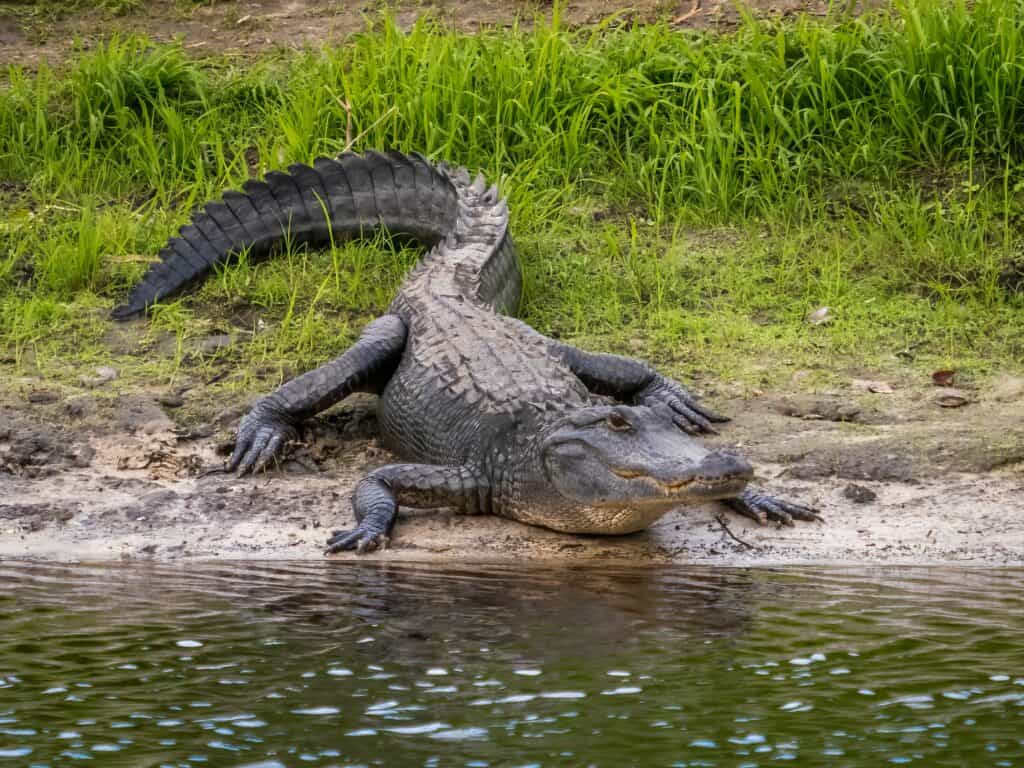
Alligators emerge in spring owing to rising temperatures
©Jim Schwabel/Shutterstock.com
- Alligators: These large reptiles escape falling temperatures by digging burrows in which they settle down. Alternatively, they may also enter into a state of dormancy right there in the icy water, sticking their snouts through the air to enable them to breathe. In spring temperatures in Georgia range between 65 °- 80 °F, enabling the reptile to emerge from dormancy which kicks in at 55 °F.

Black bears do not hibernate as long as their northern cousins but emerge in spring as well
©Derek R. Audette/Shutterstock.com
- Black Bears: Georgia’s relatively milder and shorter winters mean that the season is a less severe affair for black bears in the south compared to their northern cousins. That said, they do stay tucked away in warm, comfy (and surprisingly clean) dens, for a few weeks or about a month. If the bear in question is a parent about to have cubs, however, it may remain nestled away for longer. Black bears generally emerge in spring ready to enjoy the beauty and bounty of nature just like anyone else.
The photo featured at the top of this post is © K Quinn Ferris/Shutterstock.com
Discover the "Monster" Snake 5X Bigger than an Anaconda
Every day A-Z Animals sends out some of the most incredible facts in the world from our free newsletter. Want to discover the 10 most beautiful snakes in the world, a "snake island" where you're never more than 3 feet from danger, or a "monster" snake 5X larger than an anaconda? Then sign up right now and you'll start receiving our daily newsletter absolutely free.
Thank you for reading! Have some feedback for us? Contact the AZ Animals editorial team.






